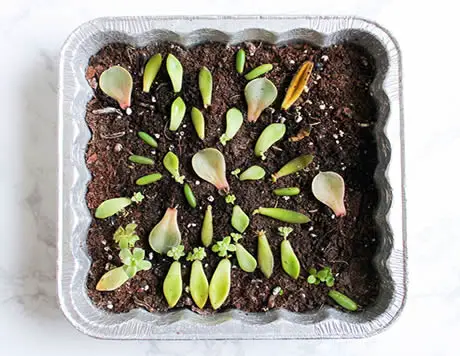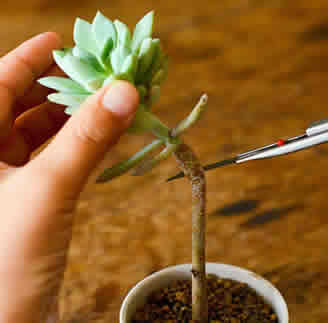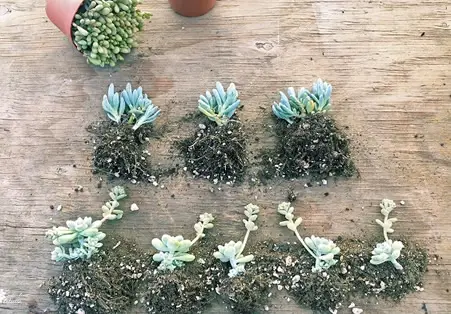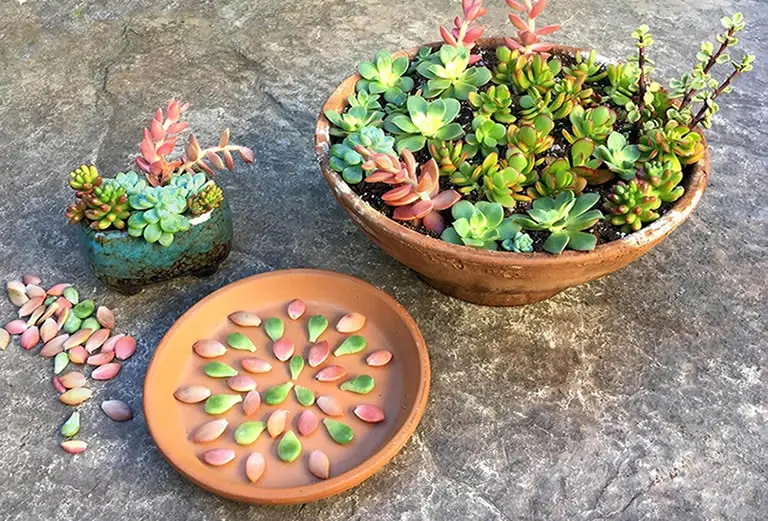Succulents aren’t just beautiful—they’re incredibly generous. These low-maintenance plants can be multiplied from just a single leaf, a cut stem, or a dividing clump. Whether you want to expand your collection, share with friends, or experiment with new arrangements, propagating succulents is fun, satisfying, and surprisingly simple.
This guide applies to most succulent varieties, including rosette-formers like Echeveria, trailing types like Sedum burrito, and upright growers like Crassula ovata (Jade Plant). Let’s walk through all the best methods to create new plants from the ones you already love.
Table of Contents
When to Propagate Succulents
Spring and early summer are the best times to propagate succulents.
The longer daylight hours and warmer temperatures help cuttings root more quickly and grow stronger.
However, with the right indoor setup, many succulents can be propagated year-round.
Method 1: Leaf Cuttings
Many succulents can be propagated from a single healthy leaf—especially rosette-formers like Echeveria, Graptopetalum, and Sedum.

-
Gently twist a healthy, plump leaf off the stem.
-
Make sure the leaf comes off cleanly with no part left behind on the stem.
-
Let the leaf callous over in a dry, shaded area for 2–3 days.
-
Place the calloused end on top of well-draining succulent soil.
-
Mist the soil lightly every few days to keep it barely moist.
-
Within 2–3 weeks, roots and tiny baby rosettes will start forming.
Once the baby plant is about the size of a dime and has its own roots, you can reduce misting and water like a mature succulent.
Method 2: Stem Cuttings
Stem cuttings work well for branching and upright varieties like Crassula, Kalanchoe, Graptosedum, and trailing types like Sedum burrito.

-
Use clean scissors or pruners to cut a healthy stem section 3–6 inches long.
-
Remove the lower leaves to expose the bare stem.
-
Let the cutting dry for 3–5 days until the cut end forms a callous.
-
Insert the stem into dry succulent soil.
-
Wait a few days, then begin watering lightly once roots form.
Cuttings usually root within 1–3 weeks and start growing upward shortly after.
Method 3: Division
If your succulent has grown in clumps or offsets—like Hens and Chicks, Aloe, or Haworthia—you can simply divide the plant at the root level.

-
Remove the plant from its pot and gently brush away soil from the base.
-
Separate offsets or clumps, ensuring each has some roots attached.
-
Allow the cut or separated areas to dry and callous for a day or two.
-
Replant in dry soil and water lightly after a few days.
Division gives you instant new plants and works great for overcrowded pots or container gardens.
Method 4: Water Propagation (With Bonus Tip)
While soil is the preferred method, some trailing succulents and soft-stemmed types can root in water—such as Sedum burrito, Graptopetalum paraguayense, and Crassula perforata.

-
Take a healthy stem cutting and remove the bottom leaves.
-
Place the cut end in a jar of water, making sure no leaves touch the surface.
-
Keep the jar in bright, indirect light and change the water every 2–3 days.
Bonus Tip: Add a couple of drops of diluted liquid succulent fertilizer (NPK 10-10-10 or 2-7-7) to give your cuttings a gentle boost as they root.
Once roots are 1–2 inches long, transplant into succulent soil and begin normal care.
Propagating Succulents Outdoors
In warm, dry climates (zones 9–11), many succulents can be propagated directly outdoors:
-
Gently lay leaf cuttings or stem cuttings on top of sandy, well-draining soil.
-
Water sparingly—let nature do the rest.
-
Trailing types and groundcover succulents like Sedum, Graptosedum, and Crassula muscosa root easily this way.
Avoid propagating outdoors in wet or cold conditions unless the area is well protected.
Easiest Succulents to Propagate
Here are some of the most beginner-friendly succulents to multiply:
-
Echeveria – great from leaf and stem cuttings
-
Sedum burrito – trails beautifully and roots quickly
-
Crassula ovata (Jade Plant) – stem cuttings root easily
-
Graptopetalum paraguayense (Ghost Plant) – both leaf and stem methods work
-
Hens and Chicks (Sempervivum) – divides readily at the base
-
Kalanchoe tomentosa (Panda Plant) – use stem cuttings
-
Graptosedum – roots fast and grows easily
-
Haworthia – multiplies through offsets
-
Aloe vera – best through division
-
String of Bananas – easy in soil or water
Final Thoughts
Succulent propagation is one of the most rewarding parts of growing these amazing plants.
Whether you’re building a collection, rescuing a leggy plant, or just want more of your favorites, you can turn one succulent into many with just a bit of care and time.
With the right method and a little patience, you’ll have healthy, rooted cuttings that are ready to grow—and thrive—on their own.
Once your newly propagated succulents start to mature you will want to ensure you are giving them the best possible care as outlined in our article Succulent Care: The Ultimate Guide to Thriving, Low-Maintenance Plants.

